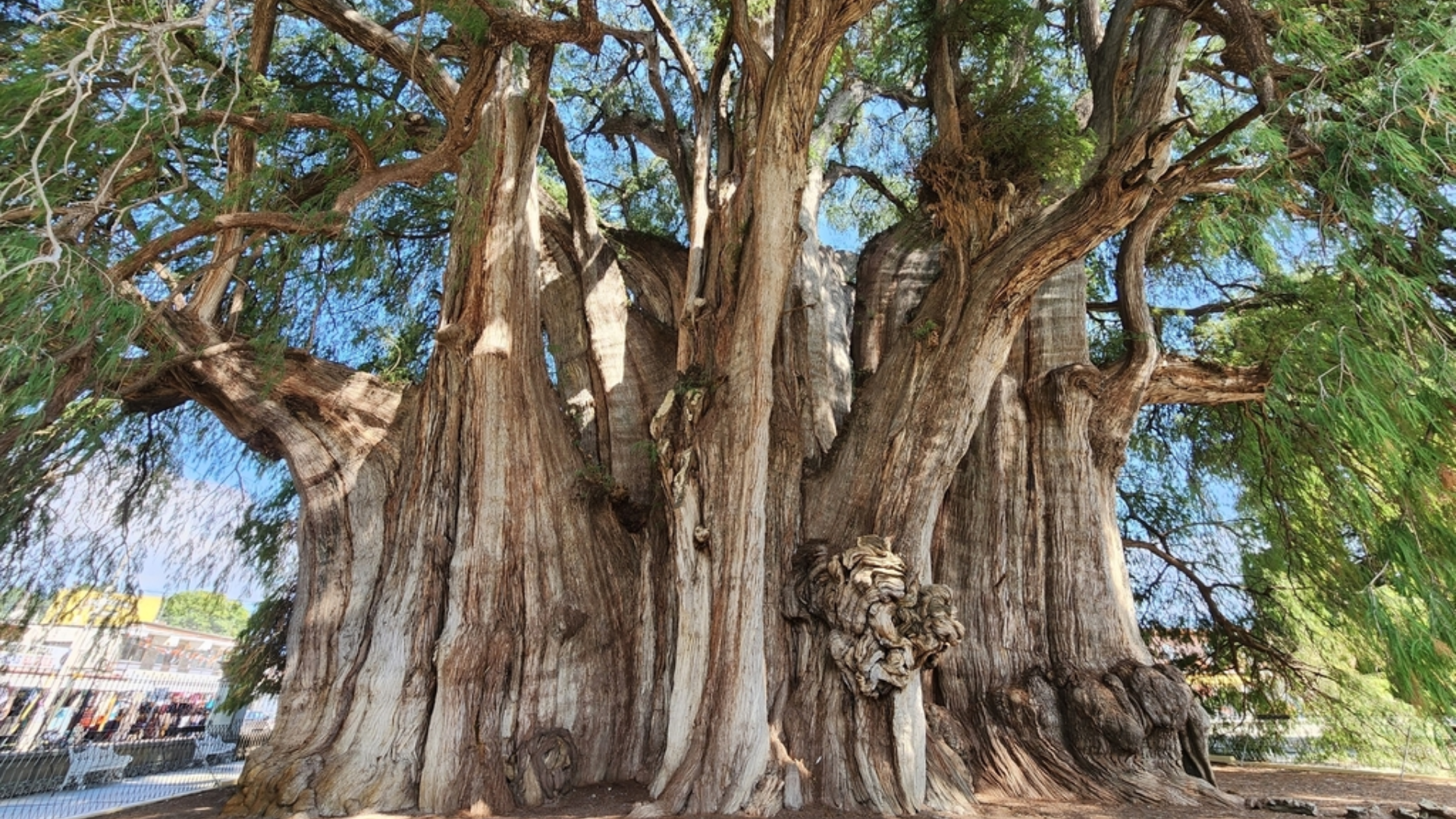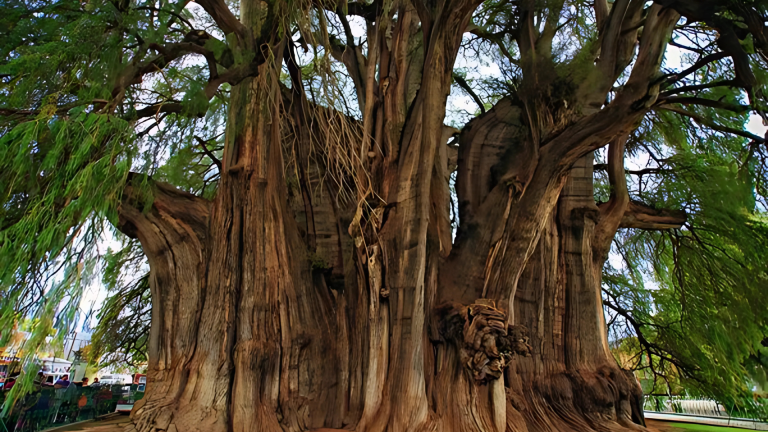The Árbol Sabino, also known as the Ahuehuete or Montezuma Cypress, is a tree like no other. It’s Mexico’s national tree, proudly recognized since 1921. These trees are renowned for their remarkable size and exceptionally long lifespan, with some specimens living for over a thousand years.
In this article, we’ll look into everything you need to know about this majestic tree. From how to care for it in your garden to its cultural significance, we’ve got you covered. If you’ve been wondering how to incorporate an Árbol Sabino into your landscape or are just curious about its history, you’re in the right place.
We understand that choosing the right tree for your garden can be overwhelming. Trust us—we’ll guide you through the process step by step, making it easier for you to enjoy this beautiful addition to your home.
Understanding Árbol Sabino

The Árbol Sabino goes by several names. You may also hear it referred to as Ahuehuete, Sabino, or Montezuma Cypress. Its scientific name is Taxodium mucronatum. A bit technical, I know, but that’s the name you’ll find in plant books and research.
This tree belongs to the Cupressaceae family. It’s part of a group of trees known for their tall, sturdy trunks and evergreen leaves. This is mostly in Mexico, but it also grows in parts of Guatemala and the southwestern United States.
Unique Features of the Árbol Sabino
The Árbol Sabino is a truly unique tree. Here’s what makes it stand out.
- Impressive Size and Longevity: One of the most remarkable aspects of the Sabino is its impressive size. These trees can grow incredibly tall. Some live for over a thousand years!
- Distinctive Bark and Leaves: The bark of the Sabino tree is rough and gray-brown in color. As it ages, it becomes even more textured and interesting. Its needle-like leaves are soft and green, creating a stunning contrast with the bark. The leaves change color in the fall, adding to the tree’s beauty.
- Natural Shape and Growth Patterns: The Sabino tree grows in a pyramid or cone-like shape. Its branches spread out wide, giving it a full, symmetrical look. This makes the tree appealing from any angle.
Now you know a bit about its name and features. Stick with me—there’s a lot more to learn!
The Role of Árbol Sabino in Biodiversity

The Árbol Sabino plays a big part in its ecosystem. It’s not just a beautiful tree; it’s a vital habitat for many forms of wildlife.
- Wildlife Habitat: Sabino trees provide shelter and food for a diverse array of animals. Their tall, sturdy trunks are perfect for nesting. Small creatures find refuge in the roots and underbrush.
- Supporting Birds and Pollinators: Birds love the Sabino’s branches. They nest and rest in its shade. Pollinators, such as bees and butterflies, are attracted to its flowers, which helps other plants grow.
- Preserving Flora and Fauna: By planting a Sabino tree, you help protect the environment. These trees support a variety of other plants and animals. They play a role in keeping the natural balance.
By adding Árbol Sabino to your garden, you’re not just creating beauty—you’re also making a difference in biodiversity.
Ideal Growing Conditions for Árbol Sabino

The Árbol Sabino is a resilient tree, but it thrives best in specific conditions. Here’s what it needs:
- Climate: This tree loves temperate to warm climates. It can handle a range of temperatures, but it thrives in warmer areas.
- Soil: It prefers deep, fertile, and well-drained soil. Think of the soil along riverbanks or wetlands—that’s where it feels at home.
- Sunlight: For the Sabino to grow strong, it needs full sun. The more sunlight, the better.
- Watering: It needs consistent moisture, especially when young. But once it’s established, it becomes drought-tolerant. So, no need to worry too much about water once it’s grown.
With the right care, your Sabino tree will thrive in your garden. Make sure to match its needs, and it’ll reward you with beauty and longevity.
Landscaping Using Árbol Sabino
The Árbol Sabino isn’t just a tree—it’s a great way to make your garden more peaceful and beautiful. Whether you want more shade, privacy, or just a tree that stands out, the Sabino is a perfect choice.
Create Shade and Privacy
If your yard gets too hot in the summer, the Sabino can help. It grows tall and wide, giving you lots of cool shade. Its thick branches also make a great natural screen, so you can enjoy some privacy. Try planting it near a patio or along a fence to make a quiet, shady spot to relax.
Make It the Star of the Garden
In a big yard or garden, the Sabino can be a stunning centerpiece. Its large size and beautiful shape really stand out. Imagine looking out and seeing it right in the middle of your backyard. It makes a big impact without needing a lot of extra decoration.
Plant Friends Around It
The Sabino tree also gets along well with other plants. It creates shade, so you can add plants that love shady spots—like ferns, hostas, or wildflowers. Just be sure not to overcrowd it or block the sunlight too much.
With a little planning, the Árbol Sabino can become one of your favorite parts of the garden. Think about what you want, and you’ll find lots of ways to make it fit right in.
How to Harvest and Use Sabino Tree Wood
The Sabino tree offers more than just beauty. Its wood is valuable too. Here’s what you should know.
- Wood Characteristics: Sabino wood is a durable and strong material. It has a smooth texture and a light color. Over time, it darkens, adding to its charm. This makes it ideal for a wide range of woodworking projects.
- Craftsmanship Uses: People have used Sabino wood for centuries. It’s perfect for both traditional and modern furniture. You’ll find it in chairs, tables, and even wooden sculptures. The wood is not only sturdy but also looks beautiful once polished.
- Sustainable Harvesting Practices: It’s important to harvest Sabino wood responsibly. Cutting too many trees can harm the ecosystem. To protect the environment, always follow sustainable practices. Ensure the tree is mature before harvesting and refrain from taking too much from a single area.
By using Sabino wood wisely, you can create beautiful pieces while protecting the trees and the environment.
Árbol Sabino and Climate Change Adaptability
The Árbol Sabino is a tree that knows how to survive in tough conditions. Here’s how it handles climate challenges.
Drought Tolerance: Sabino trees can survive with little water once they’re established. They have deep roots that help them find moisture, even in dry soil. This makes them perfect for arid conditions.
Resilience to Extreme Weather: Extreme weather doesn’t scare the Sabino. It can handle strong winds and heavy rains. The tree’s sturdy trunk and branches help it stay upright during storms. It’s built to last.
Future Prospects for Árbol Sabino in Changing Climates: With climate change, some areas may become too hot or dry for the Sabino tree. However, its drought tolerance might help it survive in new places. On the other hand, unpredictable weather patterns could affect its growth and location.
The Árbol Sabino is a strong tree, but like all of us, it faces challenges. It will need our care to thrive in the future.
Medicinal and Practical Uses
The Árbol Sabino is not just beautiful—it’s also incredibly useful. For centuries, people have turned to this tree for its natural healing properties. Its bark and leaves have been used in traditional medicine to help with skin problems, muscle pain, and even circulatory issues.
Beyond its health benefits, Sabino’s wood is known for being strong and durable, making it great for construction, furniture, and tools. In landscaping, the Sabino adds a bold and stylish touch, especially in large gardens or parks where its size and shape can really shine.
Whether you’re looking for shade, natural remedies, or sturdy wood, the Árbol Sabino offers something valuable for everyday life.
Planting and Maintenance Tips

Caring for your Árbol Sabino is simple if you follow these easy steps.
- Planting Season: The best time to plant your Sabino tree is during the rainy season. This ensures the tree gets enough water to establish its roots. It gives the tree the best start in life.
- Transplanting: If you need to move your tree, do it carefully. The roots are very important, so make sure you preserve them. Also, ensure there is plenty of space around the tree for it to grow.
- Pruning: The Sabino tree doesn’t need a lot of pruning. But if you see dead or damaged branches, remove them. This helps the tree stay healthy and strong.
- Fertilization: Use organic compost to enrich the soil. Avoid overusing fertilizer, as it can harm the tree. A little goes a long way!
With these simple steps, your Árbol Sabino will thrive and grow strong for years to come.
Conclusion
Planting an Árbol Sabino in your garden can bring so much more than just beauty. If you live in a suitable climate, this tree can thrive, providing shade, privacy, and a natural habitat for wildlife.
Its ecological benefits help with soil stabilization and water conservation, while its cultural significance adds depth and meaning to your outdoor space. The Sabino tree is not only a majestic addition to your landscape but also a living piece of history.
I encourage you to embrace the Árbol Sabino if you have the space. Its longevity and charm will make a lasting impact. Have you planted one or thought about it? Please share your experiences or any questions you might have in the comments below. I’d love to hear from you!
Frequently Asked Questions
What Is the Lifespan of An Árbol Sabino?
The Árbol Sabino can live for over a thousand years, making it one of the longest-living trees in the world.
How Tall Does the Árbol Sabino Grow?
The Árbol Sabino can grow over 100 feet tall, with some specimens reaching heights of up to 120 feet.
Can the Árbol Sabino Be Grown in Pots?
Due to its large size and extensive root system, it’s not ideal for pots, but can be grown in large garden spaces with sufficient room to spread.













